Since the middle of December I have been working as a hospital chaplain, visiting patients who are seriously ill. I have never worked in a hospital before and my main worry was that I would be distressed and not know how to cope with some of the suffering I would encounter. It turns out that this has not been the case, primarily due to the practice of compassion, specifically tonglen.
I have been practising tonglen for almost 20 years and was fortunate to be taught the practice by Rob Nairn and then develop the practice by reading the books and listening to the audio of teachings by Pema Chodron. I think that the best book I have encountered which teaches tonglen is ‘Start Where You Are’, a book I read at the start of my training in tonglen and one which I still dip into regularly.
I have been teaching the practice for over a decade. Tonglen can feel challenging to many people, as it calls on us to breathe in suffering, in whatever form that suffering may take: energy, texture, colour, atmosphere. Therefore, our team within the MA, have developed ways to make the practice more accessible. As part of this I developed a practice called tonglen movement, which many people find to be a good way into the tonglen practice. You can access a video of tonglen movement HERE
This practice has supported me in the most challenging moments of my life. Sat with my grandmother as my grandfather died. Being with the grief of my father after my brother died. Recently, as my dog Holly died.
And I have heard similar reports from many people I have known and taught over the years. However, as Jon Kabat-Zinn says, we need to weave our parachute before jumping out of the aeroplane, ie. we need to learn tonglen practice in relation to minor difficulties, so that it is there for us when the major difficulties arise.
We do the tonglen practice from our compassionate heart: the deep well of love and compassion which is the birth right of all human beings. We breathe in the energy of the suffering we encounter (our own or the suffering of others) into our hearts, where it is effortlessly transformed by the compassionate heart into a healing and compassionate energy of whatever is needed to heal the sufferings. We then breathe this compassionate energy out of our hearts to wherever it is needed. Tonglen practice involves inviting our imagination to unfold this process in whichever way feels right for us: visual, felt sense, language, knowing.
I am quite a wordy person and so as I breathe in I say to myself words such as ‘heavy, hot, tight, pain’, which supports a felt sense of breathing in the energy of suffering. As I breathe out, words such as ‘clear, light, love, peace’ support a felt sense of breathing out the energy of compassion to wherever it is needed. I sometimes do this in the hospital, as I am walking about between visits (there is a lot of walking about), breathing in time to the pace of my steps. It is a good way to process my last visit and good preparation for my next visit. Then the practice is there at my fingertips at those times when there are no words, nothing to be said, and I am there, present, just myself as I am, able to cultivate an energy of compassion, which all humans recognise as part of our common humanity.
If there was one practice I would recommend to transform ourselves, into happier wider versions of ourselves, it would be tonglen. So why not have a go.
Kind Wishes,
Heather
______________________________________________________________________________________________________
If you are interested in supporting yourself and/or others through the death and dying process, or have an interest in working towards facing your own fears around death now, then why not come to our introduction weekend Living Well to Die Well at Samye Ling or online. If you find the course is beneficial for you then you can choose to continue on the supported online course for 12 months.
The course is led by Heather Regan-Addis and Jacky Seery
In person WEEKEND at Samye Ling or Online 7-9 July 2023 READ MORE ABOUT THE COURSE HERE
.


